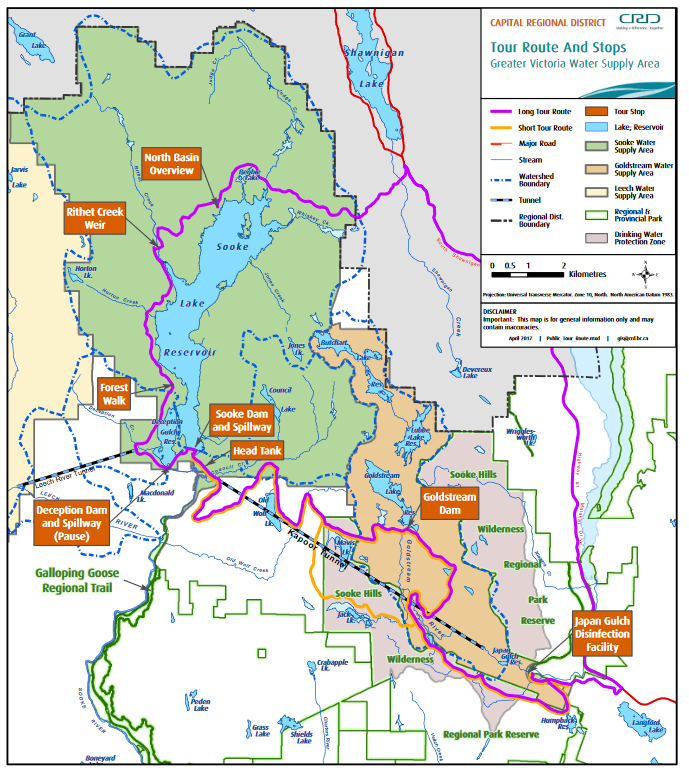Last Friday we went on a tour of the Sooke Lake Watershed and Reservoir, which is the watershed that supplies water to more than 370,000 people in the Greater Victoria region. Capital Regional District (CRD) is the regional government of southern Vancouver Island and the Gulf Islands and is responsible for the region’s supply of water, managing the associated watershed and reservoirs, and hosted the tour we took on Friday.
Demand Management
CRD has managed to keep water supply demand constant over the past five to ten years even though the region’s population grew. They shared that this was possible by incentivizing retrofits of low-flow toilets and showers. CRD has looked at other demand management schemes like conservation-oriented water rate structures, but we left the tour discussing other impactful demand management schemes that we’ve seen or heard of elsewhere like incentivizing native plant gardens (instead of grassy lawns that need a lot of irrigation), rainwater harvesting, greywater reuse, and composting toilets. If we used treated water for only what we needed it for, what population could the Sooke Lake reservoir support? How can we promote policy and implementation to encourage this kind of demand management? Could deferred investment costs in backup infrastructure be applied toward incentivizing demand management?
Population growth & climate change
The primary supply of Greater Victoria’s water is Sooke Lake. The Sooke Lake is recharged by rainfall, and the current turbidity of the lake is so low that the current water treatment system is very simple: UV disinfection followed by chlorination. However, CRD is trying to mitigate the risks of insufficient water supply caused by increased demand through population growth and/or decreased supply caused by climate change. CRD has a 30+ year plan to bring another watershed and reservoir online to manage this uncertainty.
Forest management
Because the water supply is unfiltered, forest fires pose a risk by introducing ash in the lake, which can increase turbidity. This has an impact on both the aesthetic and public health characteristics of the water. The reservoir’s forestry management is thus primarily concerned with minimizing fire risk. The primary strategy is managing the forest stock such that the structure simulates an old growth forest characteristic to this region: Douglas firs transitioning to hemlock and big-leaf maple. We also learned that we should hate the very flammable and invasive Scotch broom!
 Map of watershed tour.
Map of watershed tour.